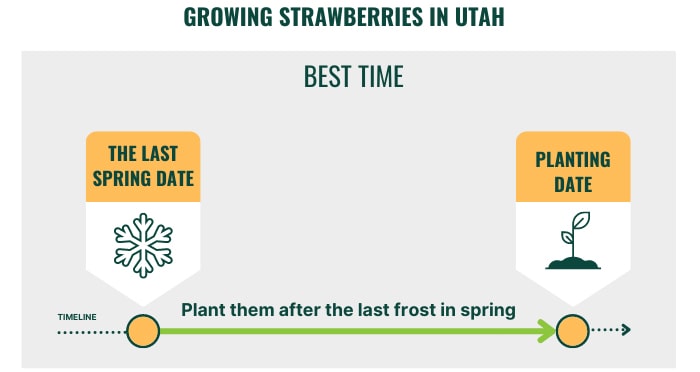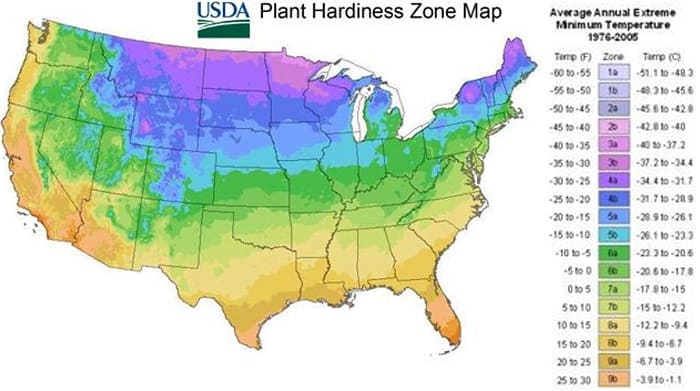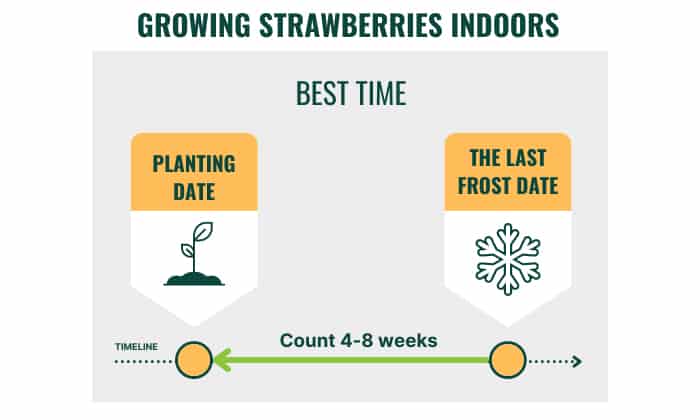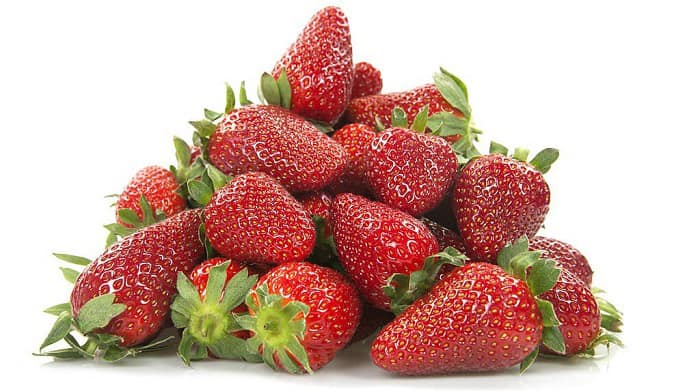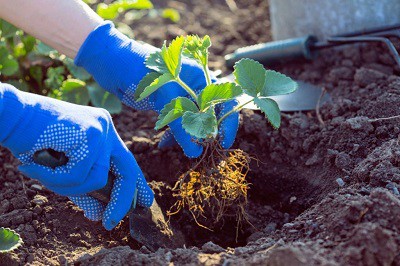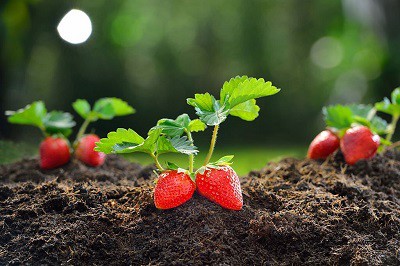Fresh strawberries off the vines are favored due to their exquisite taste. These fruits are the sweetest the moment they’re picked, and if you find the flavors of store-bought strawberries wanting, it pays to grow them yourself at home.
As for when to plant strawberries in Utah, March to October is the general production season, but late April and May are the best months for gardening. Discover tips on growing strawberries in Utah below.
Table of Contents
Best Time to Plant Strawberries in Utah
1. Plant strawberries in spring from April to July
The best time to plant strawberries is after the last frost in spring, since the weather during this period is sufficiently warm but not too hot, perfect for strawberries to establish themselves before summer arrives.
The problem with planting close to fall is that fruit production may be delayed or not happen altogether. So, look up your last frost and start your strawberry garden accordingly.
Considering that Utah has its final spring frost from April 16 to July 31, the growing season here can start anytime from April to July. However, April and May are the more common gardening periods because the state rarely has its last frost during the latter half of the year.
You can also refer to the chart in the next section, which lists the planting time for different hardiness zones. Utah has hardiness zone 4 to 9, so that’s what we’ll focus on.
2. Planting time for different areas
| Time for planting (estimates) | |
| For zone 4 | From April 25 or May 13 |
| For zone 5 | April 8 onwards |
| For zone 6 | April 2 onwards |
| For zone 7 | From March 23 or April 4 |
| For zone 8 | From March 14 or 29 |
| For zone 9 | From February 6 or March 1 |
3. Can I plant strawberries indoors?
You can plant strawberries indoors, but it’s unnecessary because the plants we use (usually dormant bare-root ones) can withstand a late frost even if you got your gardening dates slightly wrong. The recommendation above simply serves as the safest guideline for planting.
Another thing to note is that strawberries grow very slowly from seeds, requiring about a year to start fruit production, while transplants can bear fruits after three months or so.
Seeds also add uncertainty to the gardening process, since the strawberries they produce don’t resemble the parent plants closely.
That said, if you want to experiment with seeds, sow them indoors six to eight weeks before the last frost and move them outside once the freezing cold is gone.
4. How late is too late to plant strawberries in Utah?
If you use a high-tunnel system, the latest time to grow strawberries would be around September. It’s wise to grow plug plants rather than bare-root ones in this case, mainly due to their higher survival rates in tunnels and earlier fruiting, but both are feasible options for fall planting.
Note that bare-root strawberries should be sown three to four weeks earlier than plug types, so if we plant plug strawberries in early September, the latest time to cultivate bare roots would be July.
Nonetheless, because both planting mediums are hard to find in the fall and many people lack a high-tunnel system, the planting season in Utah may end in May or June.
Varieties of Strawberries to Plant in Utah
Now that you know what month to plant strawberries in, you might be wondering which varieties are best to grow in Utah garden. In that case, check out the list below.
1. June-bearing strawberries
These produce fruits in May and June and are excellent for jams and jellies. While growing June-bearing varieties, make sure to give them frost protection in late spring and winter and less than ten hours of sunlight per day.
Some of the best strawberries for Utah under this category are Earliglow, Allstar, Jewel, Chandler, Sparkle, Honeoye, Sequoia, and Guardian.
2. Everbearing and day-neutral strawberries
Though these are different types, many nurseries tend to refer to everbearing and day-neutral strawberries interchangeably. Everbearing cultivars bear fruits in both spring and fall, while day-neutral types are productive throughout summer until the first frost.
Another difference between these cultivars is that day-neutral types will fruit regardless of day lengths, but everbearing strawberries require over twelve hours of sunlight to be productive.
Some varieties to keep in mind are: Selva, Tribute, Seascape, and Tristar for day-neutrals, plus Fort Laramie, Ozark Beauty, and Ogallala for everbearers.
Tips for Planting, Caring for, and Harvesting Strawberries in Utah
1. Tips for planting strawberries
Give the soil a 10-10-10 fertilizer prior to planting or follow the recommendations of your soil test. The usual rate is 0.01 pound of fertilizer per square foot and no more than one pound of dressing per 20 feet of garden space.
Plant strawberries so that the crown is slightly above ground but the roots are submerged in the soil.
Spacing for the plants depends on what system you’re using. If you have matted rows, position bare-root plants eighteen inches apart with at least three feet of clearance between rows.
Annual hill strawberries, on the other hand, may be closer to each other, requiring only twelve inches of distance for both transplants and garden patches.
Remember to water strawberries after sowing and keep them moist during the whole process.
2. How to care for strawberries
Satisfy strawberry sun requirements by giving them at least eight hours of sunshine per day. You should water the plants periodically at a rate of one to two inches of moisture per week, more so when the weather is hot.
To meet strawberry soil requirements, ensure the ground is not salty and amend it with iron chelates in May if there are signs of iron chlorosis. Otherwise, wait until August to feed the plant with a balanced fertilizer again.
You should also use plastic mulch in annual hills and straw mulch in matted rows to control weeds.
3. How to harvest strawberries
Pick strawberries when they are evenly red with no white or green spots on the fruits. Usually, this will be four weeks after flowering occurs.
Timing-wise, it’s essential to harvest berries under dry weather and avoid washing them after, since moisture encourages rot. Simply hold the stem and snap it to detach the fruits from the vines, all while keeping the cap or calyx intact.
You can keep strawberries in the fridge or freezer, depending on how soon you can eat them (within three days or twelve months).
Factors That Affect the Optimal Time to Plant Strawberries in Utah
Strawberries do not thrive under extreme heat and often fail to set fruits when temperatures reach 80℉. In Utah, summer is too hot to enable strawberry production, often leading to a pause in fruit bearing during the warm season—even for day-neutral varieties.
Strawberry plants also incur damage once temperatures dip below freezing around 28 degrees Fahrenheit. Since fall planting is impossible without special accommodations, spring is the best time for growing strawberries in Utah.
Frequently Asked Questions
Do strawberries grow well in Utah?
Yes. An acre here can yield 6,000 to 20,000 pounds of strawberries. So long as you purchase virus-free plants and grow them at the right time, they should fruit well.
Do you get strawberries the first year you plant them?
Yes. You can get strawberries within the first year of planting for all varieties (June-bearing, everbearing, and day-neutral). However, it is better to cut all flowers and halt fruit production for June-bearing types during the first year to enjoy more fruits during the subsequent seasons.
Are strawberries perennial?
Yes. Strawberries are perennials, which is why you should protect them from winter cold so that they can keep growing once spring comes.
Conclusion
Strawberries are delicious, whether eaten fresh or processed. Once you’ve determined when to plant strawberries in Utah, you can grow these tasty fruits in your home garden and harvest them this season. Just remember to purchase plants from nurseries as soon as they’re available.
Here are the best time to plant strawberries in:

Hi, I am William – Floridayards’ digital content creator. My job is to find answers to all your concerns with thorough research and our team’s expert advice. I will also bring you honest reviews on the best products and equipment for raising your beautiful garden. Please look forward to our work!



